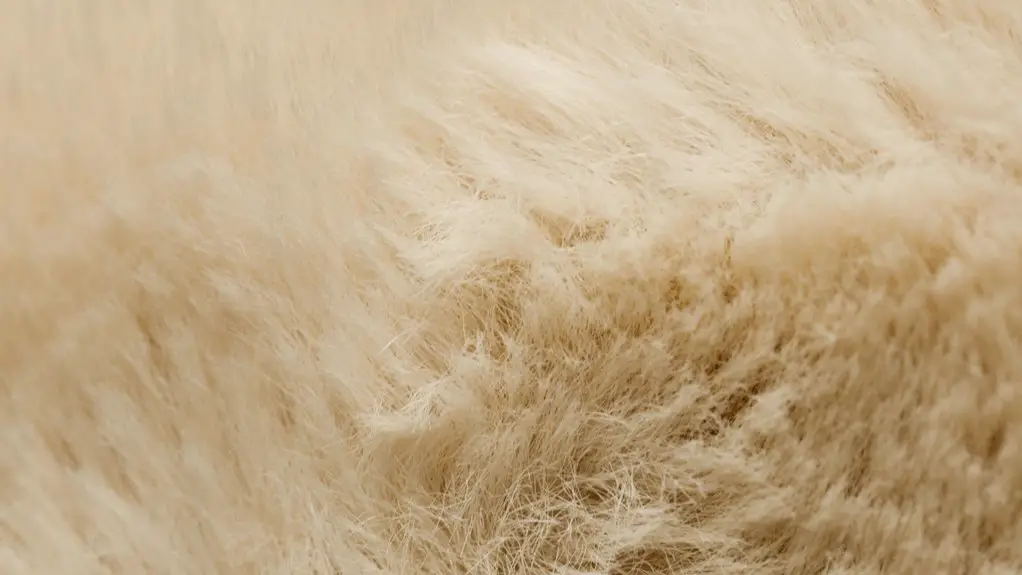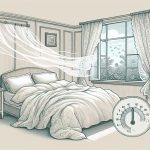If you struggle with allergies or sensitive skin, choosing the right pillowcase material can make a big difference in your comfort and health. You’ll want fabric that not only feels soft but also resists allergens like dust mites and bacteria. But with so many options available, it’s easy to feel overwhelmed. Knowing which fabrics truly offer hypoallergenic benefits can help you make a choice that supports better sleep and skin care.
Table of Contents
Key Takeaways
- Natural fabrics like cotton, bamboo, silk, and Tencel are best for hypoallergenic pillowcases due to breathability and allergen resistance.
- Bamboo pillowcases offer natural antimicrobial properties that help reduce allergens like dust mites and mold.
- Silk pillowcases are gentle on sensitive skin and hair, minimizing irritation and allergy symptoms.
- High thread count and tight fabric weave enhance allergen blocking and improve pillowcase effectiveness.
- Avoid synthetic fibers, wool, feather fillings, and cheap cotton blends as they trap allergens and irritate skin.
Benefits of Hypoallergenic Pillowcase Materials
Although you mightn’t notice it immediately, choosing hypoallergenic pillowcase materials can greatly reduce allergens like dust mites, pet dander, and mold in your sleeping environment.
Selecting hypoallergenic pillowcases helps minimize allergens like dust mites, pet dander, and mold where you sleep.
When you pick the right fabric, you minimize exposure to these triggers, which helps prevent allergy symptoms and improves your sleep quality.
Hypoallergenic pillowcases also lower the chances of skin irritation, making them ideal if you have sensitive or acne-prone skin.
By using materials designed for allergy prevention, you create a cleaner, healthier space that supports both your respiratory health and skin comfort.
This simple switch can make a big difference in how rested and refreshed you feel each morning, reducing discomfort and promoting overall wellbeing.
Top Hypoallergenic Fabrics for Pillowcases
When selecting pillowcases that reduce allergens effectively, choosing the right fabric is essential. Natural fabrics like cotton and bamboo are excellent budget friendly options because they’re breathable and resistant to dust mites.
Bamboo, in particular, offers natural antimicrobial properties, making it a smart choice if you want something eco-friendly and soothing. For luxury options, silk pillowcases stand out; they’re gentle on your skin and hair while naturally repelling allergens.
Tencel is another premium fabric that feels soft and controls moisture, reducing allergen buildup. Avoid synthetic materials that trap heat and irritants.
Essential Features to Consider in Hypoallergenic Pillowcases
When choosing hypoallergenic pillowcases, you’ll want to pay attention to fabric weave density since a tighter weave can block allergens more effectively.
You should also look for pillowcases made without harsh chemicals to avoid skin irritation.
These features guarantee your pillowcase not only protects you but also feels comfortable all night long.
Fabric Weave Density
Because fabric weave density directly affects how well pillowcases block allergens, you should pay close attention to this feature when choosing hypoallergenic options.
Different weave types, like percale and sateen, offer varying levels of tightness. A denser weave means smaller gaps between threads, reducing the chances for dust mites, pollen, and other allergens to penetrate your pillowcase.
The density impact is vital—higher thread counts usually indicate tighter weaves, which act as better barriers against allergens. However, don’t just focus on thread count alone; the weave type influences breathability and comfort too.
Choosing a pillowcase with a tightly woven fabric guarantees you minimize allergen exposure while still enjoying a soft feel. Prioritizing fabric weave density helps you protect your sleep environment effectively.
Chemical-Free Production
Though a pillowcase’s fabric and weave play essential roles, you shouldn’t overlook the importance of chemical-free production in hypoallergenic options.
When choosing pillowcases, look for those made through sustainable sourcing to guarantee the materials are free from harmful pesticides and synthetic chemicals. Eco friendly manufacturing processes minimize exposure to irritants that can trigger allergies or skin sensitivities, making your sleep environment safer.
By selecting pillowcases produced without harsh dyes, formaldehyde, or chlorine bleach, you reduce the risk of allergic reactions and respiratory issues.
Prioritizing chemical-free production not only protects your health but also supports environmentally responsible practices.
Materials to Avoid for Allergy-Friendly Bedding
Even if you’re enthusiastic to find the perfect hypoallergenic pillowcase, steering clear of certain materials is essential.
Some bedding materials, like synthetic fibers such as polyester or nylon, can trap heat and moisture, creating a breeding ground for dust mites and other allergy triggers.
Avoid pillowcases made from cheaply produced cotton blends that may contain chemical residues, irritating sensitive skin and worsening allergies.
Wool and feather-filled pillowcases also tend to harbor allergens, so they’re best left out of your allergy-friendly bedding choices.
Instead, focus on natural, breathable fabrics that minimize allergen buildup.
Proper Care and Maintenance of Hypoallergenic Pillowcases
To keep your hypoallergenic pillowcases effective, you’ll need to clean and maintain them properly. Following simple care routines and maintenance tips prevents allergens from building up and extends their lifespan. Wash pillowcases weekly in hot water to remove dust mites and allergens. Avoid fabric softeners, which can reduce fabric breathability.
Here’s a quick guide:
| Task | Frequency | Recommended Method |
|---|---|---|
| Washing | Weekly | Hot water (130°F/54°C) |
| Drying | After washing | High heat or sun drying |
| Stain Removal | As needed | Gentle, hypoallergenic soap |
| Storage | When not in use | Dry, airtight container |
Stick to these care routines and maintenance tips to keep your pillowcases allergen-free and comfortable.
How Hypoallergenic Pillowcases Enhance Sleep and Skin Health
When you choose hypoallergenic pillowcases, you reduce exposure to allergens that can disrupt your sleep and irritate your skin.
These pillowcases help create a cleaner, safer sleep environment, promoting better rest and healthier skin. With less allergy reduction needed, you’ll notice fewer sneezes and less congestion at night. Plus, they minimize skin irritation caused by dust mites, pet dander, and harsh fabrics.
Here’s how hypoallergenic pillowcases enhance your sleep and skin health:
- Prevent dust mite accumulation
- Reduce exposure to common allergens
- Minimize skin irritation and redness
- Promote breathability for cooler sleep
- Support sensitive skin with gentle materials
Choosing the right pillowcase makes a clear difference in your nightly comfort and skin’s well-being.
Frequently Asked Questions
Can Hypoallergenic Pillowcases Help With Asthma Symptoms?
Like a gentle breeze easing tension, hypoallergenic pillowcases can offer asthma relief by reducing allergens. When you choose the right pillowcase materials, you’ll minimize irritants and breathe easier during sleep.
Are Hypoallergenic Pillowcases Suitable for People With Eczema?
You’ll find hypoallergenic pillowcases help reduce eczema flare ups by minimizing skin irritation. They keep allergens and irritants away, creating a gentler sleep environment that supports your sensitive skin and helps you stay comfortable through the night.
How Often Should Hypoallergenic Pillowcases Be Replaced?
They say, “Out with the old, in with the new.” You should replace hypoallergenic pillowcases every 6-12 months, depending on pillowcase lifespan and cleaning frequency, to maintain hygiene and allergy protection effectively.
Do Hypoallergenic Pillowcases Prevent Pet Dander Allergies?
You can reduce pet dander exposure with hypoallergenic pillowcases, but they won’t completely prevent allergies. They help trap allergens, supporting allergy prevention efforts, but combining them with regular cleaning offers better protection against pet dander.
Are Hypoallergenic Pillowcases Effective Against Mold Allergens?
Imagine waking up in a fresh, mold-free room—hypoallergenic pillowcases can help with mold prevention by resisting moisture buildup. You’ll boost your allergy management, reducing mold allergens and breathing easier every night.
- A Guide to Fabric Dye Prices and Services in Bangladesh - June 20, 2025
- Twill Fabric Manufacturers in Bangladesh: A Sourcing Directory - June 20, 2025
- How to Source High-Quality Cotton Fabric From Bangladesh - June 20, 2025







